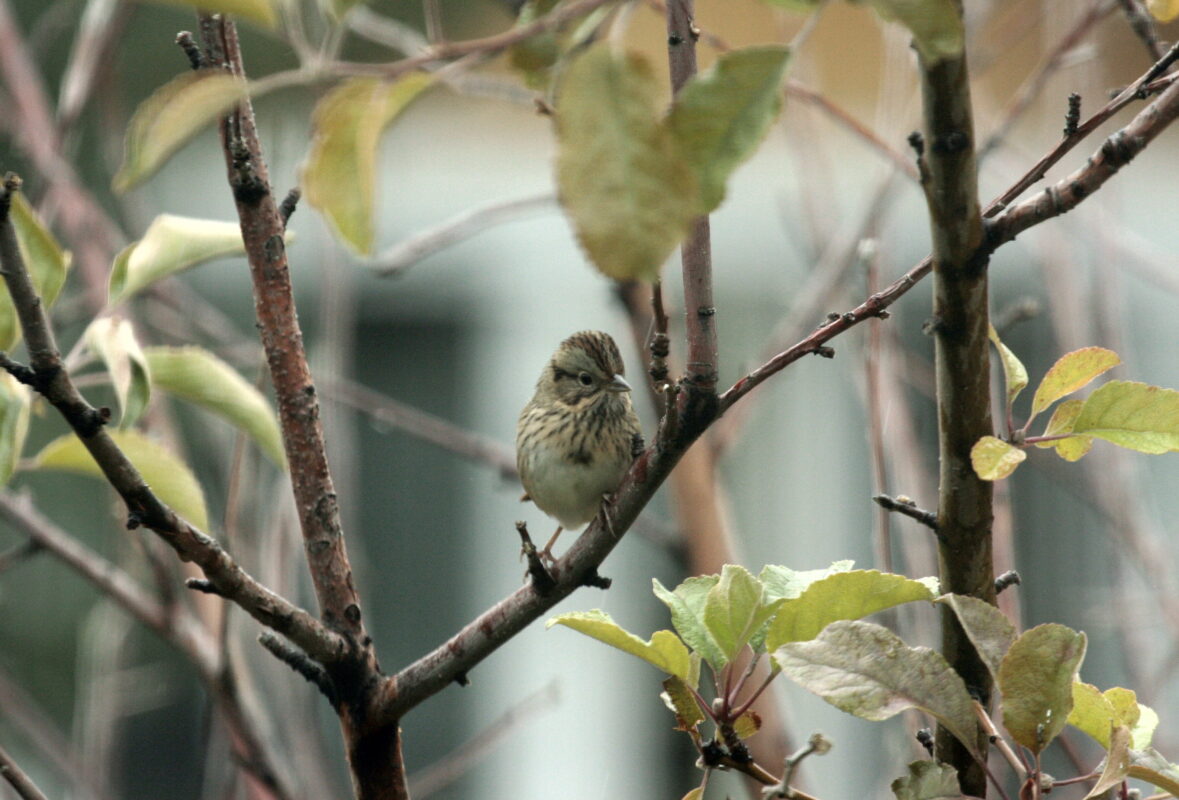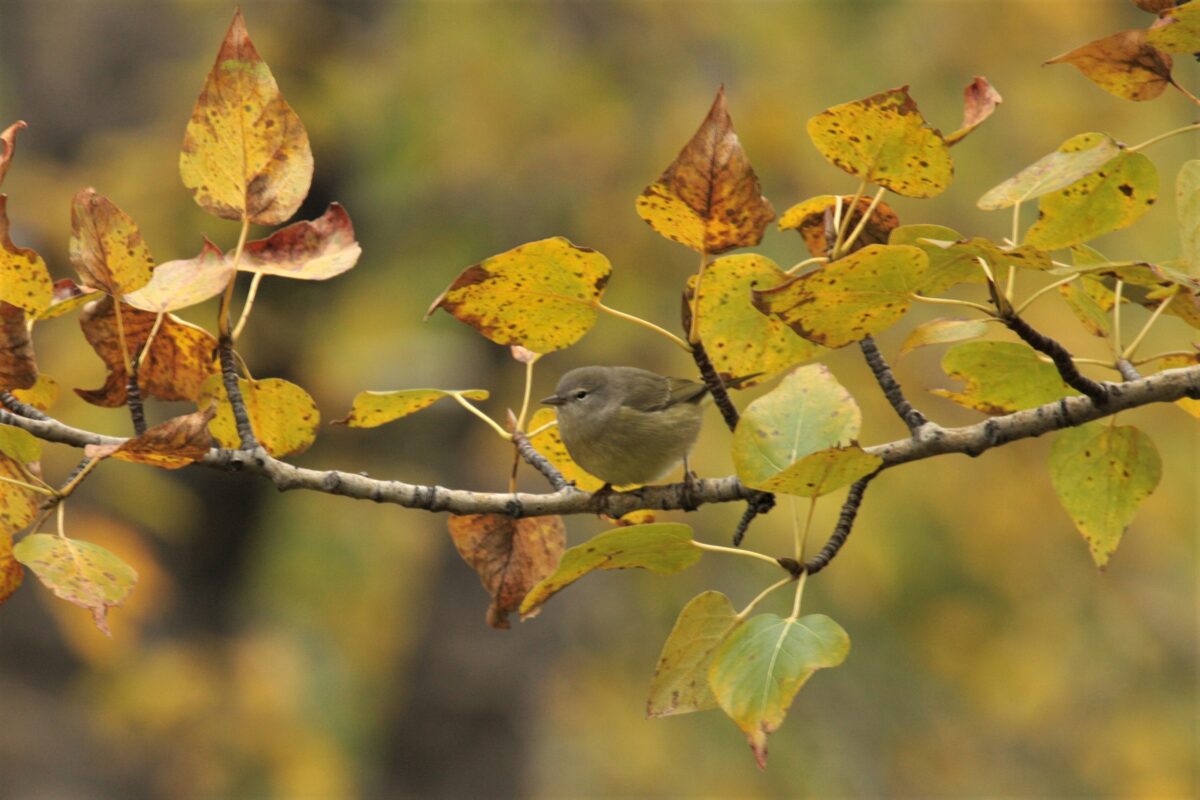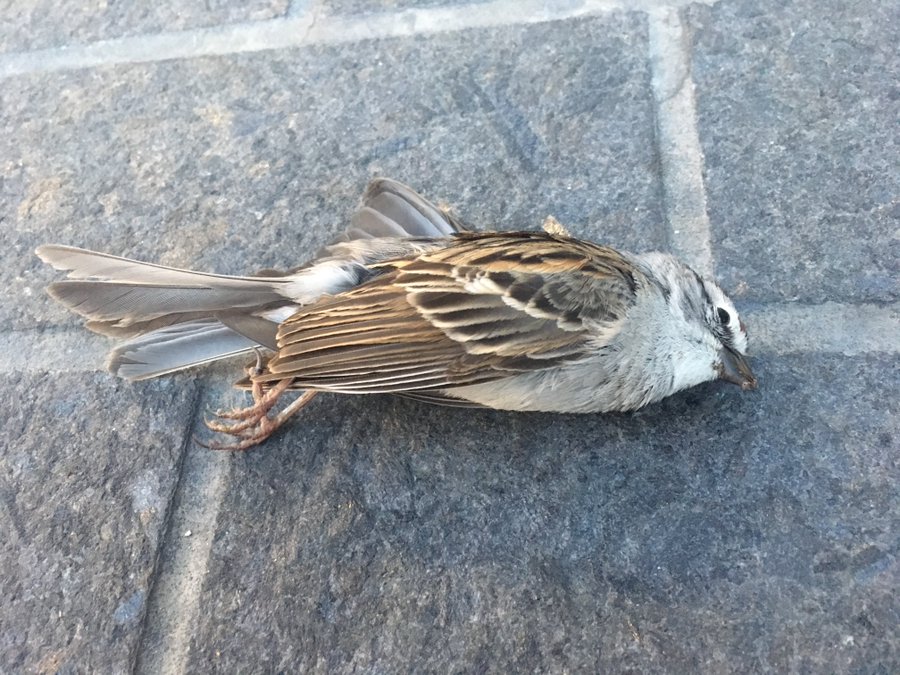By Cathy Warwick
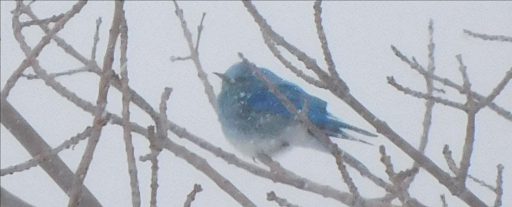
The Mountain Bluebirds are back in Calgary and surrounding areas! The “Friends of Fish Creek” birders saw five at Carburn Park on March 21st. The Bluebirds appear to arrive faithfully on the Spring Equinox every year. This picture Carole Steeves took of a Mountain Bluebird sort of sums it up. Imagine you fly all night from the Southern States and, exhausted, you land in Calgary only to be greeted by a cold wind and snow covering all the food. Perhaps I am projecting my own “snow-fatigue” onto this bird in the picture. Hang in there little guy, things will turn around soon. And then it will get bad again, and then better again… this is Calgary after all.
This cold Bluebird is probably stuck eating seeds and old berries it finds. When the weather gets warmer it will switch to its main food source – insects. According to Audobon.com, it especially likes caterpillars, beetles and grasshoppers. Maybe that’s why it makes its home in the open fields around Southern Alberta, a lot of bugs.
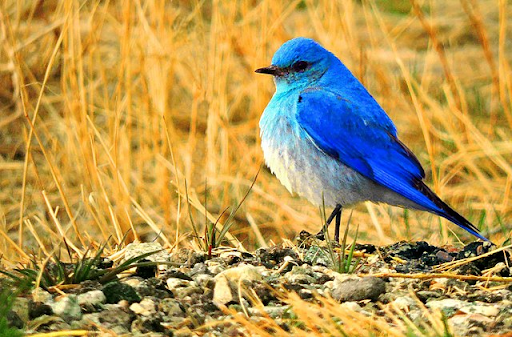
Years ago my family traveled up to the Ellis Bird Farm near Lacombe expecting to see a flock of Mountain Bluebirds in the spring. It was there that I learned that the bluebirds are very territorial while breeding and, according to their fact sheet, need to nest about 2-3 acres apart. That is why the nest boxes are put on what is called a ‘Mountain Bluebird Trail’. There are many such trails in Alberta and the efforts of volunteers building and monitoring nesting boxes can be read about all over the internet. It’s fun to slowly drive down a Bluebird trail. If you’re lucky you will see the unmistakable bright blue of a Male Mountain Bluebird. They are like a piece of the summer sky come to life. If you see a bird pop out of the nest that is more navy blue with a bright white chest then is probably a Tree Swallow that has taken a nest box.
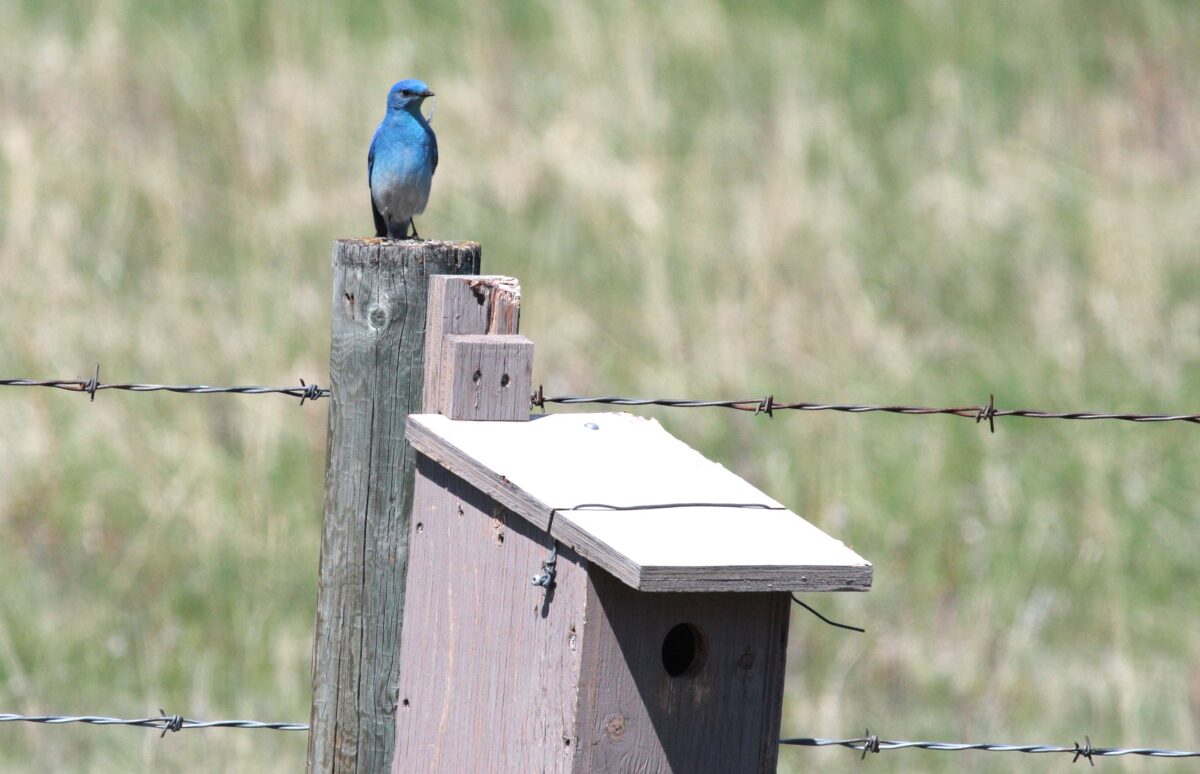
Like the Blue Jay the blue comes from the structure of the feathers and the way it refracts the light. There is no actual blue pigment in the Mountain Bluebirds feathers. This is probably one of the more irritating facts that you can tell a beginner birder – “That bird isn’t really blue you know.” Birders already have a nerdy reputation so let’s use this fact sparingly. It’s interesting though, this bird really is sky blue, as the sky is also just refracted blue wavelengths.
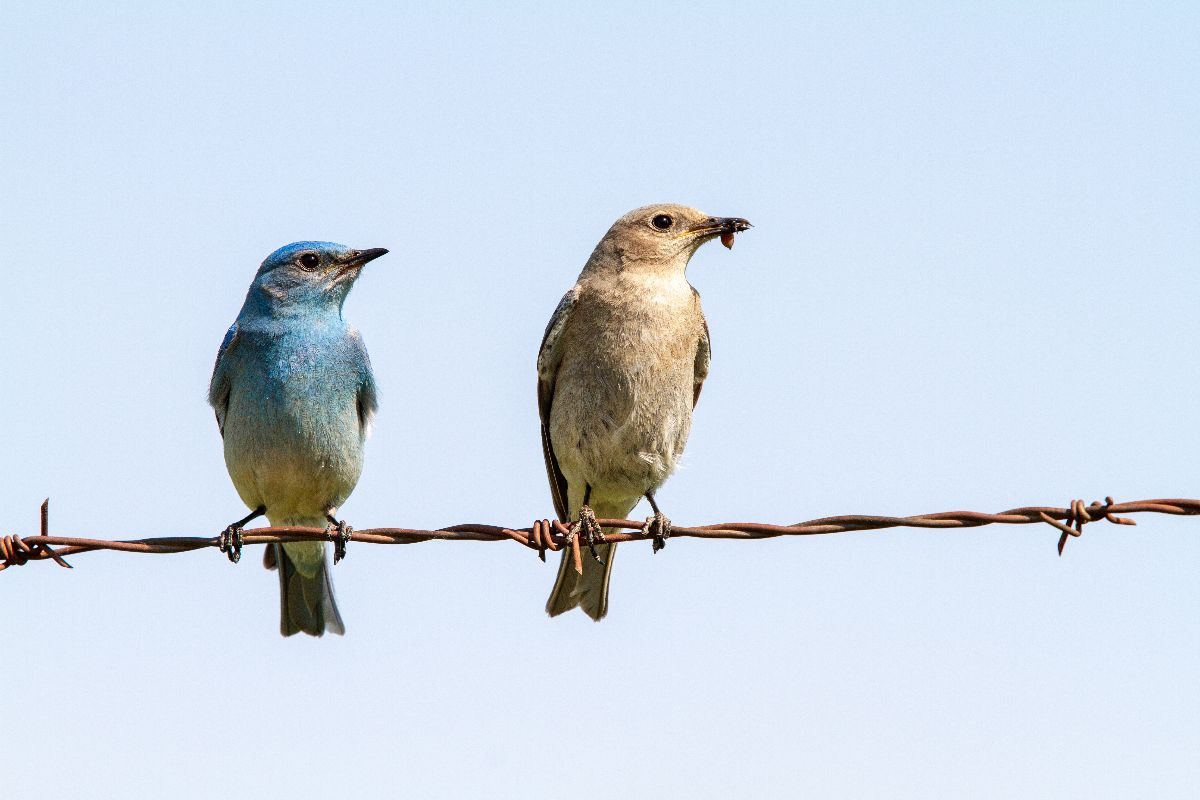
The Mountain Bluebirds are in a hot competition for nesting cavities. They fight Tree Swallows, House Sparrows, other Mountain Bluebirds and worst of all – the European Starling. Yes, these aren’t your blue birds of song, flitting around Cinderella and landing on available shoulders. Reading about them on the internet the adjective “aggressive” comes up a lot. The Mountain Bluebirds are tough fighters scraping out a living. Needless to say, their population numbers fluctuate and although they are currently listed as ‘Least Concern’ their peak in population was in the 1940’s. According to the Nature Conservancy of Canada they have decreased by approximately 26 per cent between 1966 and 2014. Their scrappy, fighting spirit will be needed, as well as the help from the nest box volunteers.
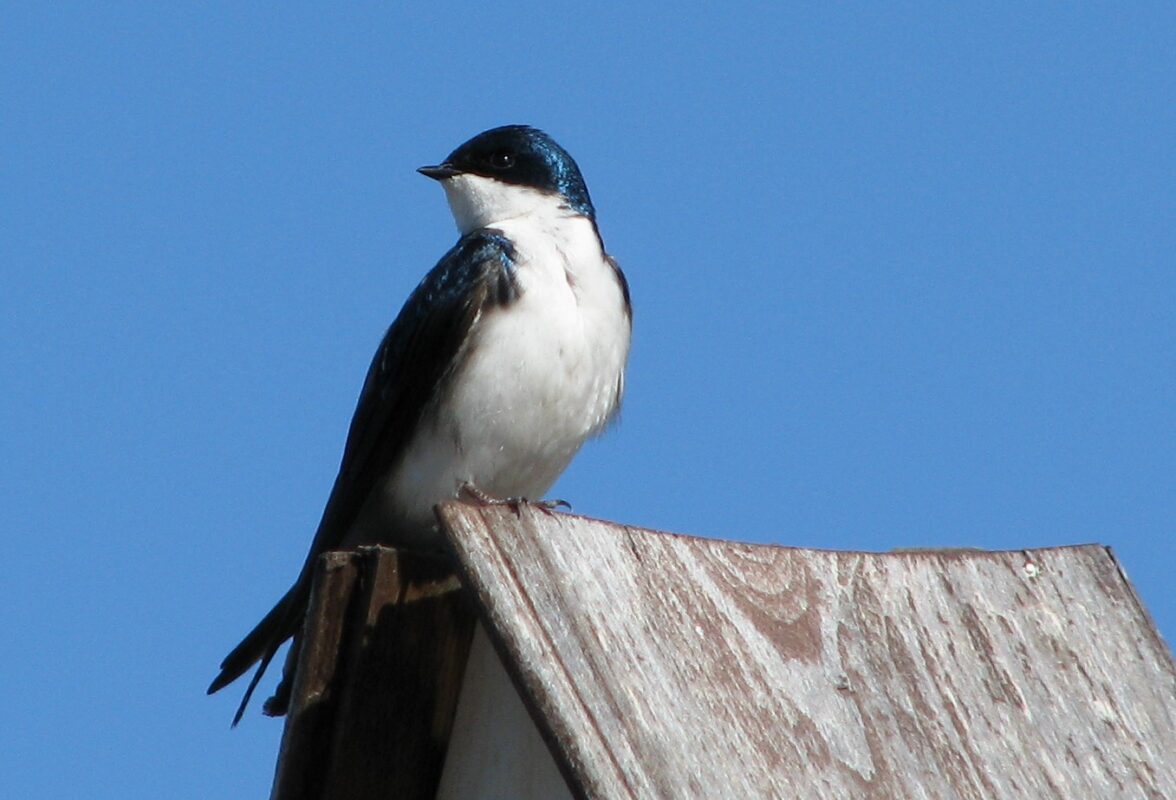
Here is a link to the Calgary Area NestBox Monitors Society
Note: In addition to a number of migrating Mountain Bluebirds that have been seen along the Bow River in the past two weeks, there was a pair of Western Bluebirds seen at Carburn Park up until March 30. This species is rarely seen in Alberta, and this is likely the first sighting ever in the city.
